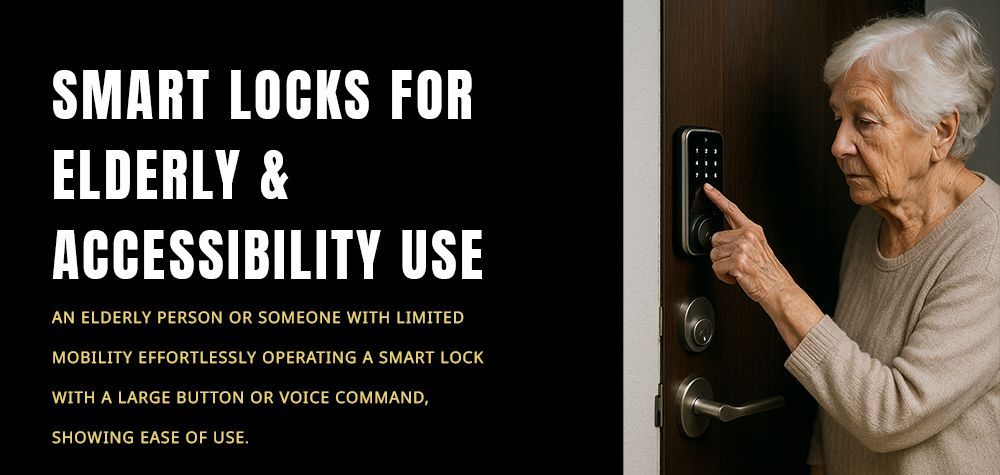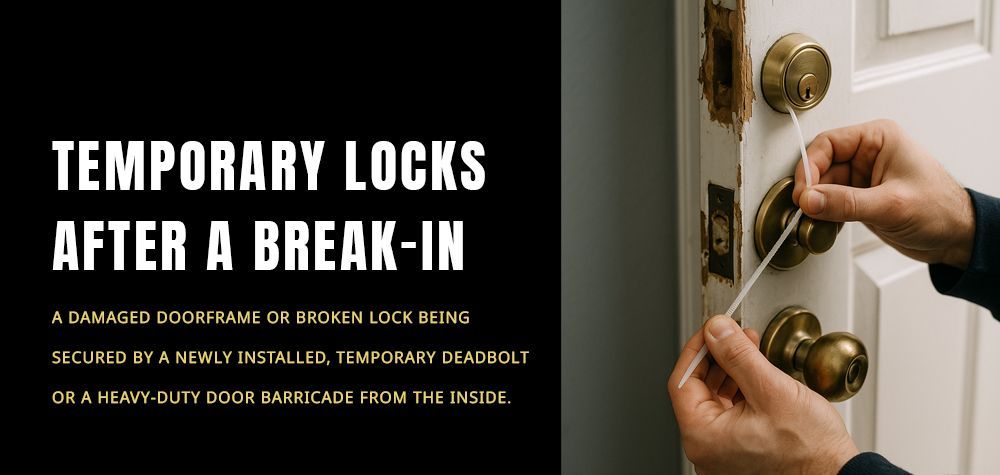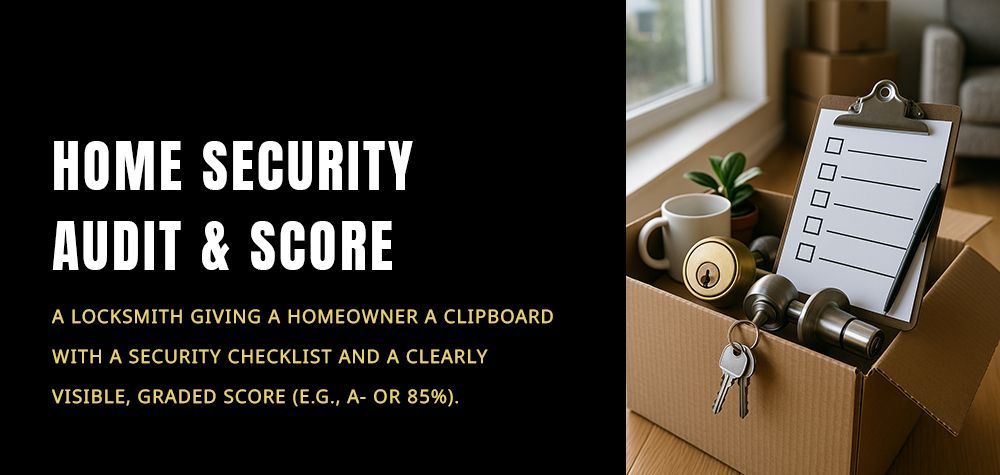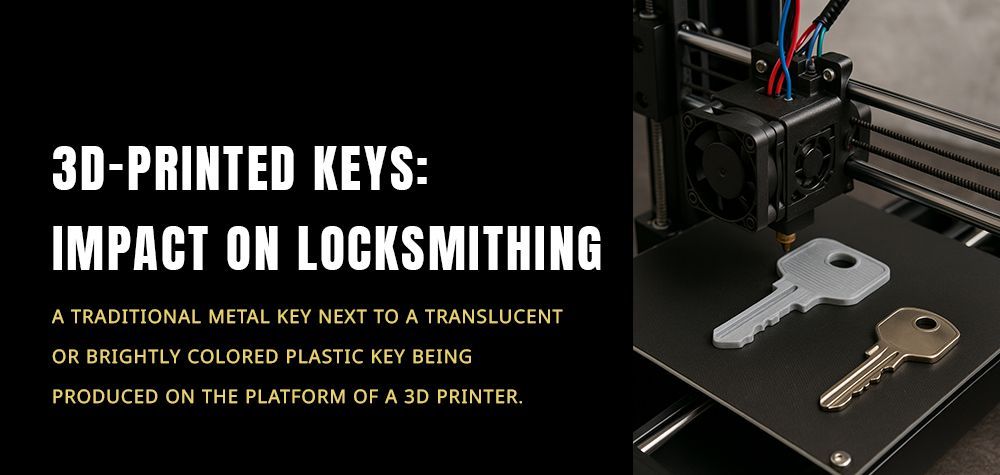How to test if your home locks are pick-resistant
In an age where security threats can be both digital and physical, protecting your home starts at the front door—literally. While you might invest in surveillance cameras or motion sensors, the very first line of defense is your lock. But here's the critical question: is your home lock truly pick-resistant? Many homeowners assume their locks are secure simply because they’re installed or come from a known brand. However, not all locks are created equal, and some can be picked in mere seconds with basic tools. That’s why testing your locks for pick-resistance isn’t just smart—it’s essential. Let’s walk through how to evaluate the security of your home locks the right way.
What to do if your front door lock keeps spinning!
Understanding What “Pick-Resistant” Really Means
Before diving into the test, it’s important to understand what pick-resistance actually involves. A pick-resistant lock isn’t pick-proof—there’s no such thing as a completely unpickable lock. What makes a lock “resistant” is its ability to withstand tampering through traditional lockpicking techniques like single pin picking, raking, or bumping.
High-security locks often feature security pins (like spool or mushroom pins), complex keyways, and reinforced cores. These design elements increase the difficulty of picking but don't guarantee immunity. A truly pick-resistant lock buys you time and discourages intruders—not just by physical resistance but by psychological deterrent.
Start with a Visual Inspection: Clues from the Outside
Sometimes, you don’t need fancy tools to know your lock might be vulnerable. Start with a close visual inspection. Look at the keyway—if it’s wide and smooth, that could mean it's easier to insert a lockpick or bump key. Simpler locks, like older pin tumbler designs or basic knob locks, usually lack internal complexity.
Next, examine the faceplate or cylinder. Do you see any markings like “ANSI Grade 1” or “Grade 2”? Grade 1 is the highest residential rating and usually indicates a more secure build. Brands like Medeco, Mul-T-Lock, and Schlage Primus typically incorporate extra anti-pick features, whereas off-brand or low-cost hardware store locks tend to cut corners.
This isn't a foolproof method—but as a first step, it offers valuable hints.
Step-by-Step: Simulate a Lock Picking Attempt (Responsibly)
Now comes the part that requires more care—testing the lock manually. While you don’t need to be a locksmith to perform a basic check, you do need to be responsible. If you're not experienced, we don’t recommend trying to pick your own locks, as you could damage the mechanism or unintentionally compromise your security. However, you can hire a trusted locksmith or use a lock-testing kit specifically designed for educational purposes.
If you do proceed with testing (with caution and consent):
- Use a practice lock first. Before touching your actual home lock, try a transparent lock or repurposed lock with a lockpick set to understand how lockpicking works.
- Attempt basic raking or tensioning. Use a tension wrench to apply slight torque and a rake pick to jiggle the pins. If the lock opens quickly, that’s a red flag. Most low-grade locks will yield within seconds to this method.
- Test with a bump key. Bump keys can open many locks with a quick strike. If your lock is susceptible to bumping, it lacks pick-resistance. Again, use caution—bumping can damage a lock over time.
- Record resistance time. If the lock resists for more than a couple of minutes, it likely has anti-pick features like spool or serrated pins.
Remember, these tests should never be used on someone else's property and should only be done on your own locks or in professional settings. If unsure, consult a certified locksmith.
Red Flags: Signs That Your Lock Is Easily Pickable
When assessing the pick-resistance of your home locks, some warning signs are easy to spot—if you know what to look for. These red flags could mean your lock isn’t just outdated, but dangerously vulnerable to intrusion. Let’s walk through each one in detail, so you know exactly what to check and why it matters.
1. The Lock Feels Loose or Wobbly
A well-secured, quality lock should feel solid when you insert the key. If the cylinder wiggles, shifts, or feels like it’s not anchored properly inside the door, that’s a major vulnerability. Loose hardware makes it easier for intruders to manipulate the internal mechanisms with basic lockpicking tools or bump keys. It also signals wear and tear that can weaken overall protection. In many cases, criminals look for these signs because they indicate a potential quick win.
2. Key Turns Too Easily or Offers No Resistance
Every lock should offer some tactile feedback—some resistance—when turning a key. If your lock turns without any effort or tension, it might be a sign that the internal pins are worn down or the tolerances are too loose. In pick-resistant locks, the pins are designed to make picking more time-consuming and difficult. When resistance is absent, the lock becomes far easier to bypass with even beginner-level tools. This seemingly small detail can make all the difference between a secure home and one that's vulnerable.
3. Wide-Open or Oversimplified Keyway Design
Take a close look at your lock’s keyhole, also known as the keyway. Is it wide and straight, with plenty of room to insert things other than your key? Simpler keyway designs are more susceptible to lockpicking, because they offer pick tools plenty of maneuvering room. High-security locks often use paracentric or complex keyways, which curve or restrict access, making it significantly harder for intruders to manipulate the lock. A basic keyway might look harmless—but it can be a major weak point.
4. You Can Open It With a Paperclip or Bobby Pin
Let’s be honest—if your lock can be jimmied open with something as basic as a bobby pin, paperclip, or cheap lockpick set, it’s time for an upgrade. While it's tempting to see this as a fun DIY experiment, what it really shows is that the lock isn't built to withstand even the most amateur-level intrusion attempts. Any lock that offers so little resistance to such improvised tools shouldn’t be securing anything more valuable than a toy chest—let alone the front door to your home.
5. No Sign of Certification or Security Rating
Professional-grade locks are typically certified by ANSI (American National Standards Institute) or BHMA (Builders Hardware Manufacturers Association), which test for things like durability, pick resistance, and force tolerance. If your lock doesn’t have a visible grade or rating—like ANSI Grade 1, 2, or 3—it may not have passed any security standard at all. Locks that skip this certification process are often mass-produced with cheap materials and zero anti-pick design features. Always look for a rating—it’s more than just a label, it’s your first line of defense.
6. It’s From a No-Name or Bargain Brand
We all like a good deal, but with locks, you really do get what you pay for. Locks made by unknown manufacturers or sold under generic labels often lack innovation, durability, and proper quality control. These budget-friendly locks typically forgo any internal security pins or special features that resist picking or drilling. In contrast, brands known for security—like Medeco, Schlage, or Mul-T-Lock—build products with enhanced protection in mind. If you can’t trace the brand or find security specs, that’s a problem in itself.
7. The Lock Is Old—Over 10 Years or More
Locks age just like any mechanical system, and older models weren’t built with today’s burglars in mind. A lock that’s been installed for more than a decade is likely missing critical updates in design and materials. For example, it might not have spool pins, sidebar mechanisms, or anti-drill plates—features that are now standard in high-security locks. Even if the lock hasn’t failed yet, the longer it’s been in service, the more likely it is to give way under stress. Think of an old lock like a worn-out tire—it may work for now, but it’s no longer safe.
Expert Recommendations: When to Upgrade Your Lock
If your lock fails the basic test—or you simply want peace of mind—consider investing in high-security locks certified by recognized standards. Brands like ASSA Abloy, Medeco, and Mul-T-Lock offer bump- and pick-resistant designs, often using sidebar mechanisms and complex pin systems.
Professional locksmiths recommend replacing locks every 5-10 years, especially if you’ve recently moved in, lost keys, or had a break-in nearby. Always choose locks with an ANSI/BHMA Grade 1 rating for residential doors. For even better security, consider pairing the lock with a smart deadbolt that alerts you of tampering attempts in real time.
Additional Preventive Measures for Lock Security
Even the best lock benefits from backup security. Reinforce the door frame with strike plates and longer screws to prevent forced entry. Use a door camera or peephole to monitor outside activity. If you're tech-savvy, smart locks with biometric or coded entry can offer another layer of protection—though they come with their own learning curve and maintenance.
Finally, don’t underestimate the power of routine checks. Lubricate your locks, test the tension, and replace keys as they wear down. Maintenance ensures your locks remain in good shape—and keeps you alert to changes that could signal a problem.
Conclusion: Make Security a Habit, Not Just a Hardware Choice
Your home’s safety depends on much more than a sturdy lock—but the lock is where it begins. By testing your locks for pick-resistance, you're taking a proactive step toward security, awareness, and peace of mind. Whether you hire a professional or test with a kit, the insights you gain are invaluable. And if you discover vulnerabilities, don’t panic—use it as an opportunity to upgrade to a stronger, smarter locking system.
Because in home security, it’s better to be proactive than reactive—and better safe than sorry.
Call Us Any Time!









